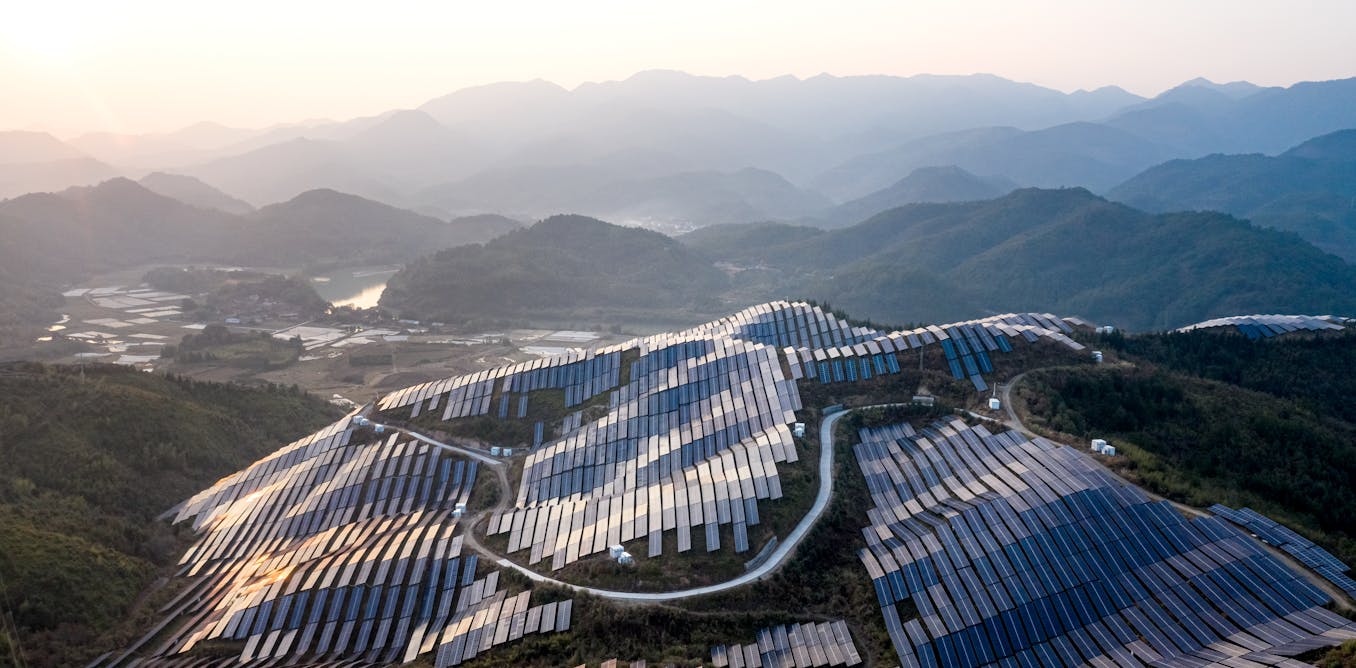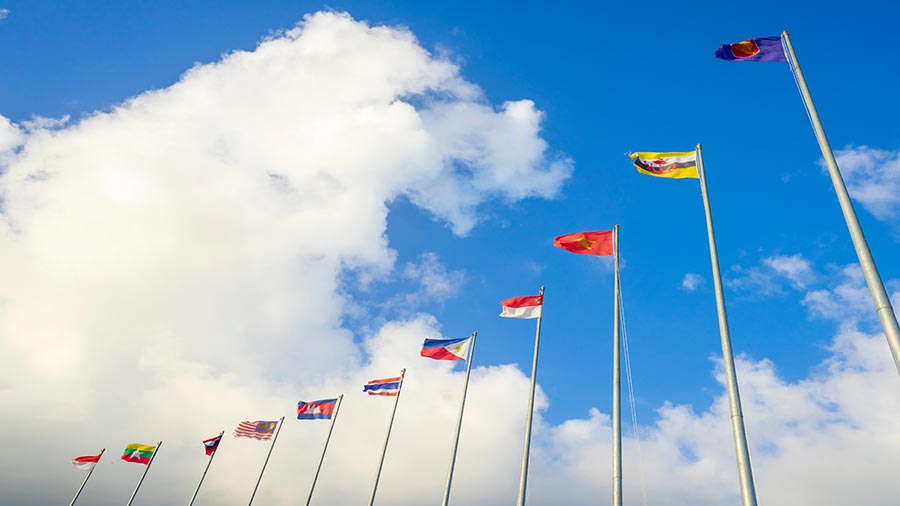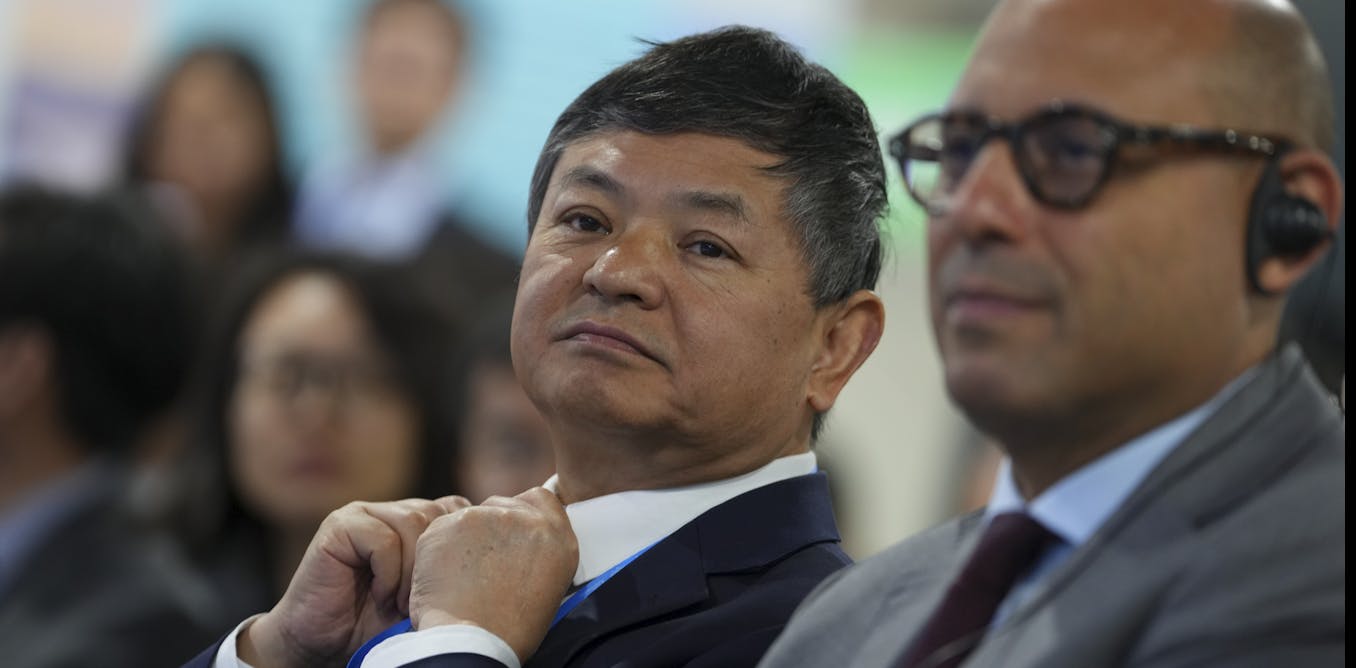China
China’s interests in Africa are being shaped by the race for renewable energy

China-Africa relations have strengthened, focusing on renewable energy and mineral resources. China heavily invests in African minerals, raising concerns about local development, labor standards, and sustainable energy access amid the global green energy race.
China-Africa relations have deepened over the past two decades, characterised by increased economic cooperation, investment and infrastructure development. China is now Africa’s largest trading partner, with partnerships focused on building roads, railways and energy projects.
As the ninth Forum on China–Africa Cooperation (FOCAC) kicks off this week in Beijing, a new, green theme is shaping their relationship: the global renewable energy race.
We asked Lauren Johnston, a development economist with expertise in China-Africa relations, to provide some insights into this development as it positions both regions as key players in the global shift towards green energy.
How is the race for green energy shaping relations between China and Africa?
The global climate crisis has created a push for renewable energy technology – like solar or wind power – which would lessen reliance on polluting energy sources. China saw some years ago it had a chance to lead in such a new industry.
Africa is home to a lot of the important minerals needed to create renewable technologies – like copper, cobalt and lithium, key ingredients in battery manufacture.
The race for green energy is therefore leading to a rush for these minerals in Africa, led by China, the US and Europe.
Chinese mining presence in Africa, which is much lower than western presence, is concentrated in five countries: Guinea, Zambia, South Africa, Zimbabwe, and the Democratic Republic of Congo (DRC).
Among them, the DRC, Zambia and Zimbabwe are the crucible of the new green energy race in Africa. They are home to Africa’s copper belt and the greatest store of lithium, copper and cobalt.
The DRC is particularly important. It has significant reserves of cobalt and high grade copper, as well as lithium. Cobalt is an unusually hard metal with a high melting point and magnetic properties. It is a key ingredient in lithium batteries.
More than 70% of the world’s cobalt is produced in the DRC and 15%-30% of that is produced by artisanal (informal) and small-scale mining.
China is the leading foreign investor – it owns some 72% of the DRC’s active cobalt and copper mines, including the Tenke Fungurume Mine – the world’s fifth largest copper mine and the world’s second largest cobalt mine.
China’s CMOC Group is the world’s leading cobalt mining company. It could produce up to 70,000 tonnes, thanks to the new Kisanfu mine.
In 2019, the DRC and China were responsible for about 70% of global production of cobalt and 60% of rare earths.
Zimbabwe is another country in which China has been investing within the context of the green energy race. Zimbabwe is home to Africa’s largest lithium reserves, a critical element in electric-vehicle battery production. In 2023 Prospect Lithium Zimbabwe, a subsidiary of Chinese company Zhejiang Huayou Cobalt, opened a US$300 million lithium processing plant. It has capacity to process 4.5 million tonnes a year of hard rock lithium into concentrate for export, against a global backdrop of some 200 million tonnes produced annually.
Zimbabwean president Emmerson Mnangagwa (L) shakes hands with a representative from China’s Sinomine Resource Group at Bikita Lithium Mine (2023).
Tafara Mugwara/Xinhua via Getty Images
There are a couple of other developments on the continent that are worth watching.
China is investing in the first mega-scale battery factory on the continent, in Morocco.
Chinese interests also have permission to develop the world’s largest untapped high-grade iron ore deposit, in Guinea. Iron ore, used in steel production, plays a crucial part in the renewable energy sector in several ways – for instance, steel is used in wind turbines and in mounting structures for solar panels. The agreement to exploit the Simandou iron ore deposit involves various countries. China’s steel-making giant Chinalco is among the players. Production is due to begin in early 2026.
As China ramps up investments in these green minerals, what concerns exist for African countries?
China’s growing control over key renewables minerals brings several challenges to African minerals suppliers.
For African countries it generates concerns for development – many want to add value to their minerals endowment at home rather than export raw materials to China and then import manufactures. China has been criticised for abandoning African interests by adding value in China and not in Africa. Many people and industries on the African continent lack access to reliable and affordable energy – and local industry is keen to capture that market.
For instance, according to the International Energy Agency, China controls over 80% of the global manufacturing steps involved in making solar panels. The concentration of production in China, alongside competition, has pushed down global solar panel prices.
China’s solar industry is keen to close Africa’s energy gap, providing sustainable energy to the millions that don’t have access. For instance, at this year’s Forum on China–Africa Cooperation gathering, China is expected to advance its Africa Solar Belt Programme. This is an agenda supported by the World Resources Institute which not only seeks to use solar energy to close Africa’s energy gap, but also to focus on powering schools and healthcare facilities with solar too.
Some countries, like South Africa, are pushing back by imposing tariffs on solar imports to protect their local industries.
There are also fears that the race to renewables, and the approach of Chinese mining-sector firms in Africa, is setting back workers’ conditions. Expansion of mines in some countries has also led to forced evictions and human rights abuses.
What can African countries do differently to take advantage of China’s mineral rush?
There are several steps they can take.
First, they can pay more attention to basic labour standards and human rights.
Second, African firms should aim to learn from their Chinese partners. They can develop the industrial knowledge and understanding of the skills and capabilities needed on the continent, similar to how China learned from Japanese, Taiwanese, Singaporean and western companies in the past.
Third, learn from how other emerging markets manage their relations with China. For instance, with China’s help, Indonesia has taken control of the global nickel market. Indonesia started by banning nickel exports in 2014, aiming to build up its own industries for processing and manufacturing. This plan was supported by Chinese investments.
Lastly, what I call China’s Hunan Model for Africa has a focus on agriculture, mining, transport and construction industries, and on building talent. This includes technical and vocational training.
The more African nations position themselves to take advantage of training programmes from other countries, the better their young people will be prepared to drive industrial growth and economic development in Africa.
This article is republished from The Conversation under a Creative Commons license. Read the original article.
Business
Democrat Claims Musk is Undermining Spending Bill Due to China Restrictions – The Hill

A Democrat claims Elon Musk influenced the reduction of a spending bill due to its restrictions on China, suggesting his actions impacted the legislation’s progress and funding allocation.
Allegations Against Musk
A prominent Democrat has accused Elon Musk of deliberately sabotaging a significant spending bill in response to China-related restrictions. This accusation comes amid ongoing tensions between the U.S. and China, particularly regarding technology and trade policies. The claims suggest that Musk’s influence is affecting critical legislative processes, raising concerns among lawmakers about foreign influence in American politics.
Implications for Legislation
The potential ramifications of Musk’s alleged actions could be significant. As a major player in the tech industry, his decisions can sway public opinion and impact the economy. Lawmakers fear that if influential figures like Musk oppose necessary legislation, it might hinder efforts to address vital issues such as national security and economic stability.
Political Reactions
The controversy has sparked debates among both Democrats and Republicans, highlighting the intersection of technology and politics. Many are demanding greater transparency and accountability from tech giants. As the situation unfolds, lawmakers may need to reassess their strategies to ensure that essential legislation moves forward uninterrupted.
Source : Democrat accuses Musk of tanking spending bill over China restrictions – The Hill
China
Dissolving a Company in China: A Comparison of General Deregistration and Simplified Deregistration

China promotes simplified deregistration to enhance its business environment, offering a faster process requiring fewer documents than general deregistration. Companies must meet eligibility criteria, resolve issues, and can choose procedures based on their situation, ensuring compliance for both options.
In addition to the general deregistration procedures, China has been promoting simplified deregistration as one of the key measures to enhance its business environment. This article highlights the differences between the general and simplified procedures, explains the eligibility criteria, and clarifies common misunderstandings about these processes.
Foreign investors may decide to close their business for multiple reasons. To legally wind up a business, investors must complete a series of procedures involving multiple government agencies, such as market regulatory bureaus, foreign exchange administrations, customs, tax authorities, banking regulators, and others. In this article, we outline the company deregistration process overseen by the local Administration for Market Regulation (AMR), comparing the general and simplified procedures.
Before 2016, companies could only deregister through the general procedure. However, on December 26, 2016, the Guidance on Fully Promoting the Reform of Simplified Company Deregistration Procedures was released. Effective March 1, 2017, simplified deregistration procedures were implemented nationwide. Since then, there have been two options: general procedures and simplified procedures.
Companies must follow the general deregistration process if any of the following conditions apply (hereinafter referred to as “existing issues”):
Companies not facing the above issues may choose either the general or simplified deregistration process.
In summary, simplified deregistration is a faster process and requires fewer documents compared to general deregistration. Companies that meet the criteria typically would typically opt for simplified deregistration. Those that do not meet the criteria may choose this route after resolving outstanding issues. For companies with unresolved issues but seeking urgent closure, they can first publish a deregistration announcement. Once the announcement period ends and all issues are addressed, they can proceed with general deregistration. Some companies may question the legitimacy and compliance of simplified deregistration. This is a misconception. “Simplified” does not mean non-compliant, just as “general” does not imply greater legitimacy. Both processes are lawful and compliant. The AMR provides these options to enable companies ready for closure to complete the process efficiently while granting those with unsolved issues the necessary time to address them after publishing the deregistration announcement. Companies can select the most suitable process based on their specific circumstances.
| This article was first published by China Briefing , which is produced by Dezan Shira & Associates. The firm assists foreign investors throughout Asia from offices across the world, including in in China, Hong Kong, Vietnam, Singapore, and India . Readers may write to info@dezshira.com for more support. |
Read the rest of the original article.
China
China’s influence grows at COP29 climate talks as US leadership fades

The 2024 U.N. climate talks in Baku yielded mixed results, agreeing to increase funding for developing nations. However, challenges remained in addressing greenhouse gas emissions and achieving sustainable progress.
The 2024 U.N. climate talks ended in Baku, Azerbaijan, on Nov. 24 after two weeks of arguments, agreements and side deals involving 106 heads of states and over 50,000 business leaders, activists and government representatives of almost every country.
Few say the conference was a resounding success. But neither was it a failure.
The central task of the conference, known as COP29, was to come up with funding to help developing countries become more resilient to the effects of climate change and to transition to more sustainable economic growth.
The biggest challenge was agreeing on who should pay, and the results say a lot about the shifting international dynamics and offer some insight into China’s role. As a political science professor who has worked on clean tech policy involving Asia, I followed the talks with interest.
Slow global progress
Over three decades of global climate talks, the world’s countries have agreed to cut their emissions, phase out fossil fuels, end inefficient fossil-fuel subsidies and stop deforestation, among many other landmark deals.
They have acknowledged since the Rio Earth Summit in 1992, when they agreed to the U.N. Framework Convention on Climate Change, that greenhouse gas emissions produced by human activities, including the burning of fossil fuels, would harm the climate and ecosystems, and that the governments of the world must work together to solve the crisis.
But progress has been slow.
Greenhouse gas emissions were at record highs in 2024. Governments are still subsidizing fossil fuels, encouraging their use. And the world is failing to keep warming under 1.5 degrees Celsius compared with preindustrial times – a target established under the 2015 Paris Agreement to avoid the worst effects of climate change.
Extreme weather, from lethal heat waves to devastating tropical cyclones and floods, has become more intense as temperatures have risen. And the poorest countries have faced some of the worst damage from climate change, while doing the least cause it.
Money for the poorest countries
Developing countries argue that they need US$1.3 trillion a year in financial support and investment by 2035 from the wealthiest nations – historically the largest greenhouse gas emitters – to adapt to climate change and develop sustainably as they grow.
That matters to countries everywhere because how these fast-growing populations build out energy systems and transportation in the coming decades will affect the future for the entire planet.
Negotiators at the COP29 climate talks. Less developed countries were unhappy with the outcome.
Kiara Worth/UN Climate Change via Flickr
At the Baku conference, member nations agreed to triple their existing pledge of $100 billion a year to at least $300 billion a year by 2035 to help developing countries. But that was far short of what economists have estimated those countries will need to develop clean energy economies.
The money can also come from a variety of sources. Developing countries wanted grants, rather than loans that would increase what for many is already crushing debt. Under the new agreement, countries can count funding that comes from private investments and loans from the World Bank and other development banks, as well as public funds.
Groups have proposed raising some of those funds with additional taxes on international shipping and aviation. A U.N. study projects that if levies were set somewhere between $150 and $300 for each ton of carbon pollution, the fund could generate as much as $127 billion per year. Other proposals have included taxing fossil fuels, cryptocurrencies and plastics, which all contribute to climate change, as well as financial transactions and carbon trading.
China’s expanding role
How much of a leadership role China takes in global climate efforts is an important question going forward, particularly with U.S. President-elect Donald Trump expected to throttle back U.S. support for climate policies and international funding.
China is now the world’s largest emitter of greenhouse gases and the second-largest economy.
China also stands to gain as provider of the market majority of green technologies, including solar panels, wind turbines, batteries and electric vehicles.
Whether or not China should be expected to contribute funding at a level comparable to the other major emitters was so hotly contested at COP29 that it almost shut down the entire conference.
Previously, only those countries listed by the U.N. as “developed countries” – a list that doesn’t include China – were expected to provide funds. The COP29 agreement expands that by calling on “all actors to work together to enable the scaling up of financing.”
In the end, a compromise was reached. The final agreement “encourages developing countries to make contributions on a voluntary basis,” excluding China from the heavier expectations placed on richer nations.
Side deals offer signs of progress
In a conference fraught with deep division and threatened with collapse, some bright spots of climate progress emerged from the side events.
In one declaration, 25 nations plus the European Union agreed to no new coal power developments. There were also agreements on ocean protection and deforestation. Other declarations marked efforts to reenergize hydrogen energy production and expanded ambitious plans to reduce methane emissions.
Future of UN climate talks
However, after two weeks of bickering and a final resolution that doesn’t go far enough, the U.N. climate talks process itself is in question.
In a letter on Nov. 15, 2024, former U.N. Secretary-General Ban Ki-moon and a group of global climate leaders called for “a fundamental overhaul to the COP” and a “shift from negotiation to implementation.”
After back-to-back climate conferences hosted by oil-producing states, where fossil-fuel companies used the gathering to make deals for more fossil fuels on the side, the letter also calls for strict eligibility requirements for conference hosts “to exclude countries who do not support the phase out/transition away from fossil energy.”
With Trump promising to again withdraw the U.S. from the Paris Agreement, it is possible the climate leadership will fall to China, which may bring a new style of climate solutions to the table.
This article is republished from The Conversation under a Creative Commons license. Read the original article.











